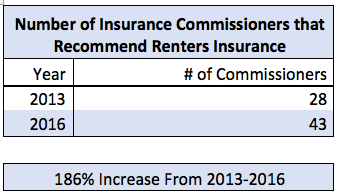
Graduates in over a dozen states are carrying high overall and private student loan debt burdens, according to a recent report by the Institute for College Access and Success. For instance, Washington DC’s average class of 2020 undergraduate student debt level is $51,700, 40 percent higher than the $30,000 national average. Delaware students’ average debt is also above $50,000. The remaining 8 of the top 10 highest student loan debt schools for undergraduates hover above $40,000. Connecticut graduates averaged $47,000 in debt. Alabama, New York, Pennsylvania, Massachusetts, Rhode Island, New Hampshire, and Vermont average student debt in the low to mid $40,000 range.
On the other end, New Mexico’s average student debt level is $13,500, which is less than half of the national average and about a third or less of the debt of any top 10 state. The highest debt in the bottom 10 is Missouri with an average of $26,300, which is over 10 percent less than the national average. Alaska and Utah students have debt levels averaging below $20,000. Idaho, Nevada, North Dakota, South Dakota, West Virginia, and Montana have student debt levels between $21,500 and $24,700.
Borrowers Rescued by Income-Driven Repayment Plans
But the higher student loan debt levels don’t necessarily mean a higher payment or debt burden for individual borrowers. Federal subsidizes in the form of income-based repayment plans are making up the difference. The Congressional Budget Office’s report shows income-driven repayment options on the rise.
“About 45 percent of the volume of federal loans was being repaid through income-driven plans in 2017, the report said, up from 12 percent in 2010,” according to the Inside Higher Ed review of the Congressional Budget Office report. “The share of undergraduate borrowers who enrolled in income-driven plans grew to 24 percent from 11 percent during this period. And the portion grew to 39 percent from 6 percent of borrowers who took out direct loans for graduate study.”
While income-driven payments as a safety net for rising debt is good news for borrowers, it isn’t a guaranteed solution. Congress can change rules on who qualifies or if the program exists at all in the future. Rising incomes can phase out the program completely. And income-based repayment doesn’t apply for private student loans. If federal student loan limits directly to students are maximized, private student loan borrowing increases.
Ideally students should borrow based on what they can afford to borrow in relation to future income. While 10 to 15 percent of future salaries is a good payment guideline, the true number is very individualized. For instance, a graduate student expecting to make more in just a few years, may decide to borrow a higher percentage based on future income that is more than a year away. Other students may borrow less because of high costs of living in their area. Students in high debt states may look towards neighboring states with less debt for less expensive college options.
Bottom Line
Deciding how much to borrow for college is a complicated decision. Start with a scholarship search before a debt search. Fill out the FAFSA, and follow up with schools and states about your student’s scholarship and grant options. All data is just numbers, but what you actually pay for college is up to you.



